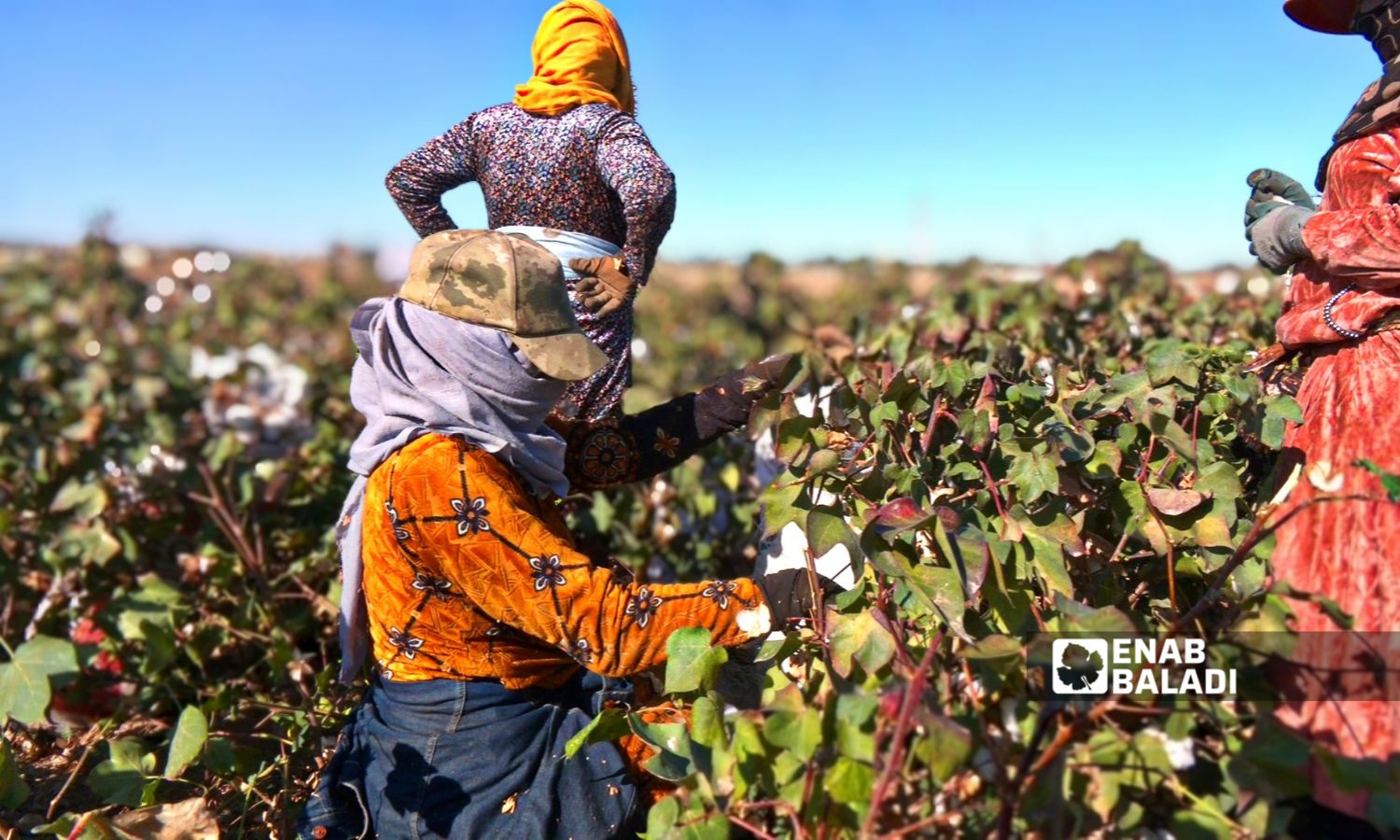



Enab Baladi – Ras al-Ain
After 20 years of working in agriculture, Karim al-Hussein left his profession in the village of al-Jamous, east of Ras al-Ain, northern al-Hasakah, and opened a store selling second-hand clothes.
Al-Hussein tried to hold on to farming, but waves of drought, rising costs, and the absence of a mechanism to market crops caused him financial losses exceeding $25,000 (290 million Syrian pounds) over the past four years.
At first, al-Hussein faced difficulty adapting to selling clothes due to his lack of experience, but gradually his shop began to attract customers. After six months of work, his financial situation improved, and he started generating a stable income for his family.
According to a report by Enab Baladi, the Ras al-Ain area in northwestern al-Hasakah has been witnessing a noticeable economic transformation since last year, as many of its residents have turned away from agriculture, which had been their primary activity for decades.
The shift away from agriculture came after repeated losses that burdened the farmers, pushing them to seek more stable sources of income, which took the form of freelance work and trade.
Over the past four years, farmers in Ras al-Ain have suffered consecutive losses due to rising agricultural costs, declining crop prices, lack of rain, as well as the absence of effective mechanisms for grain marketing and the inability to achieve viable production.
Farhan al-Bashir, who owns 150 dunams in the village of Abu Jaloud, west of Ras al-Ain, decided this year not to cultivate it due to the consecutive losses he experienced in several agricultural seasons.
Instead of farming, al-Bashir chose to trade in fuel and decided to open a small shop selling gasoline in the city, starting with a capital of $170 (two million Syrian pounds).
He mentioned to Enab Baladi that he would not return to farming unless conditions improved and agriculture became viable again, with the availability of all necessary production materials as it was in the past.
For his part, agricultural trader Muhammad al-Kurayt stated that traders suffered this year like the farmers, as they buy crops without knowing their destination for supply.
He explained to Enab Baladi that this year was particularly difficult, as he was unable to sell his wheat and cotton crops due to the complete closure of the region’s borders.
He added that his warehouse contains about 60 tons of cumin, 70 tons of cotton, and 80 tons of wheat, but he has been unable to sell these quantities due to restrictions on trade movement.
He pointed out that the current situation poses a significant challenge not only for traders but also for farmers, which directly affects the local economy and increases everyone’s suffering.
Agricultural engineer Radwan al-Saleem (62 years old) told Enab Baladi that agriculture has not reached this deteriorated state except in the last five years, comparing it to his work in the agricultural field for 24 years in Ras al-Ain.
He explained that the main reasons behind this are the absence of governmental and organizational support for the Ras al-Ain area, particularly in the agricultural sector, along with the lack of a mechanism for marketing crops.
He added that the Syrian Interim Government (SIG) relied on local councils that do not have the financial capacity to purchase crops, as they perform the role of municipalities but with broader powers.
The engineer predicted that the current situation would push many farmers to switch to other professions until the agricultural sector stabilizes, with the return of governmental support and the organization of crop marketing mechanisms.
In an investigation prepared by Enab Baladi, it was revealed that the rainfed areas outnumber the irrigated ones in the areas of Tal Abyad and Ras al-Ain, where residents rely on agriculture as a primary source of income. The soil conditions have worsened due to the over-exploitation of groundwater, unsustainable farming practices, poor water resource management, and the drying up of many private wells, causing agriculture to become a profession that does not “bring profit,” but rather incurs losses for farmers.
Extensive areas of land have been desertified, and the region suffers from rising agricultural costs and marginalization by the Interim Government of agricultural wealth, according to farmers interviewed by Enab Baladi, which portends the collapse of the agricultural sector, due to natural and human factors without immediate or long-term solutions.
Several farmers have turned to selling their lands, as agricultural lands in Ras al-Ain are divided into four stability zones, named according to the level of available water in each and the amount of rainfall.
Ras al-Ain is located adjacent to the Turkish border and has been controlled by the Syrian National Army (SNA), supported by Turkey since 2019, surrounded by fronts of combat with the Syrian Democratic Forces (SDF), and the Turkish border is its only outlet to the outside.
if you think the article contain wrong information or you have additional details Send Correction